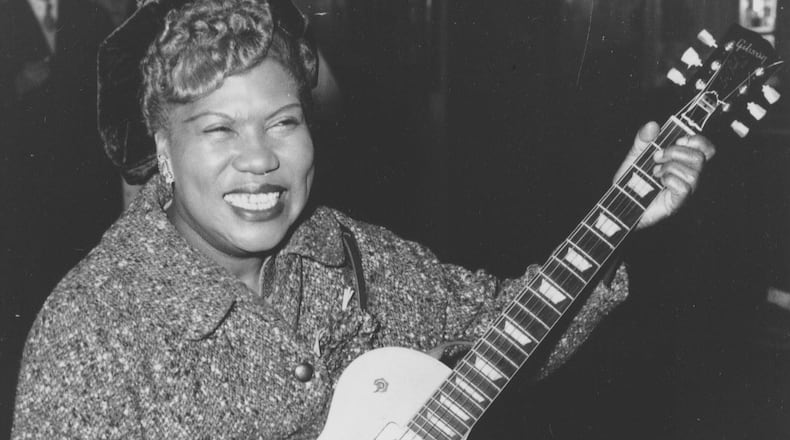When Sister Rosetta Tharpe was announced as the Rock and Roll Hall of Fame 2018 Early Influence award recipient, the music industry cheered, but also had another response: It’s about time.
The singer-musician born in Cotton Plant, Ark., in 1915 is often referred to as “the godmother of rock ‘n’ roll.”
Her 1938 hit, “Rock Me,” made her instantly memorable — a black woman who sang gospel music infected with the howls and scrapes of her distorted electric guitar.
Tharpe’s work throughout the 1940s busted boundaries. Her visceral version of the Negro spiritual “Down by the Riverside” in 1944 was entered into the National Recording Registry of the U.S. Library of Congress in 2004. As well, she recorded the first gospel song to translate to the R&B charts (then called “race” charts) with 1945’s “Strange Things Happening Every Day.”
But along with her own groundbreaking work, she also was an integral inspiration to a musician who would become one of the pillars of early rock ‘n’ roll/soul — Macon native Little Richard.
In 1947, Tharpe overheard then-14-year-old “Lil’ Richard” Penniman singing her gospel songs before she took the stage at Macon City Auditorium. She invited him to open her show — much to the dismay of the local concert promoter — and was so impressed that she paid him for his performance.
The experience convinced the young artist to pursue a music career professionally.
RELATED: Music icon Little Richard Penniman, Macon native, dies at 87
Tharpe’s work also provided a blueprint for Elvis Presley, Carl Perkins and Jerry Lee Lewis, who all cited her influence.
Tharpe’s career continued to bloom in the 1950s. She regularly sold out arenas, and in 1951, more than 25,000 fans attended her on-stage wedding to manager Russell Morrison at Griffith Stadium in Washington, D.C. It was her third marriage.
But music changed by the beginning of the 1960s, and Tharpe’s brand of guitar-heavy gospel-blues slipped out of significance. Rather than quit, she took her electric guitar to England, where she cultivated new fan bases in London and Liverpool.
Tharpe suffered a stroke in 1970 and developed diabetes, which led to the amputation of one of her legs. On Oct. 9, 1973, she experienced another stroke while waiting to begin a recording session in Philadelphia and died at the age of 58.
While Tharpe doesn’t always receive the musical recognition befitting her influence, she was honored posthumously by the U.S. Postal Service in 1998 with a 32-cent commemorative stamp.
Go to ajc.com/womens-history for the whole Women’s History Month series and for more subscriber exclusives and videos.
About the Author
Keep Reading
The Latest
Featured




